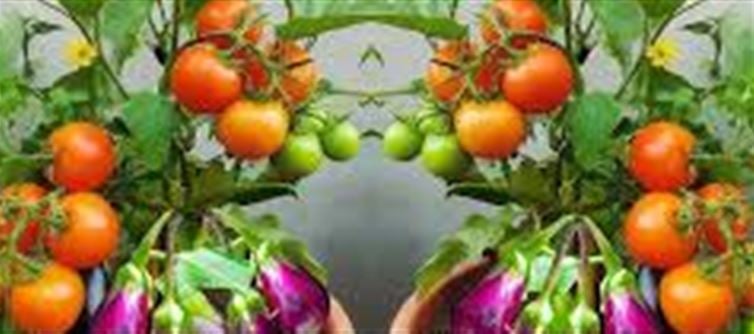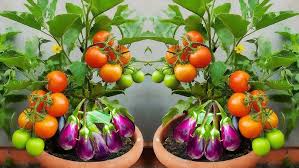
Home farming is rapidly gaining popularity, and the idea of having two different crops—like tomatoes and brinjals (eggplants)—growing on the same plant is no longer just a dream. Thanks to the marvels of modern agricultural techniques, specifically grafting, you can now grow these two beloved vegetables on a single plant. Here's how to make it happen and why it could be a game-changer for your home garden.
1. What is Grafting and How Does It Work?
Grafting is a technique where tissues from one plant are joined with another to grow together. Essentially, one plant (known as the scion) is grafted onto another (the rootstock) that serves as its root system. This allows different plants to share resources like water and nutrients while maintaining their distinct characteristics. When applied to tomatoes and brinjals, you can have both types of fruits on one plant!
2. Why Choose Tomatoes and Brinjals?
Tomatoes and brinjals are both versatile, high-yielding crops that thrive in similar growing conditions. By grafting these plants together, you can maximize space, especially in small gardens, and enjoy two different vegetables from one single plant. This method is perfect for urban farmers or anyone looking to optimize their gardening efforts.
3. The Step-by-Step Process of Grafting
· Select Your Plants: Start by choosing a healthy tomato plant as the rootstock and a brinjal plant as the scion. It's crucial that both plants are of similar size and health to ensure successful grafting.
· Make the Cut: Using a sharp, sterilized knife, make a clean diagonal cut on the stem of both plants. The cuts should match in size so they can join easily.
· Join the Plants: Place the cut sections together, ensuring the cambium layers (the growth layer of the plants) align. This is the most important part for successful grafting.
· Secure and Seal: Wrap the graft with grafting tape or rubber bands to hold the two sections tightly together. Seal the cut area with grafting wax to prevent infection.
· Care and Nurture: Keep the grafted plant in a shaded area with high humidity for a few weeks. Once the graft has healed and the plants start growing together, transfer them to their final growing location.
4. The Benefits of Grafting Tomatoes and Brinjals
· Space-Saving: Perfect for small spaces like balconies or patios.
· Increased Yield: With two crops on one plant, you can grow more in less space.
· Diverse Flavors: Enjoy the flavors of both tomatoes and brinjals without needing separate plants.
· Pest Resistance: Grafted plants can be more resistant to pests and diseases.
5. Conclusion: The Future of home Farming
Grafting tomatoes and brinjals onto one plant is just one example of how home farming can be both innovative and practical. By experimenting with different grafting techniques, you can create a productive and visually interesting garden, no matter how limited your space might be.
Disclaimer:
The views and opinions expressed in this article are those of the author and do not necessarily reflect the official policy or position of any agency, organization, employer, or company. All information provided is for general informational purposes only. While every effort has been made to ensure accuracy, we make no representations or warranties of any kind, express or implied, about the completeness, reliability, or suitability of the information contained herein. Readers are advised to verify facts and seek professional advice where necessary. Any reliance placed on such information is strictly at the reader’s own risk.





 click and follow Indiaherald WhatsApp channel
click and follow Indiaherald WhatsApp channel